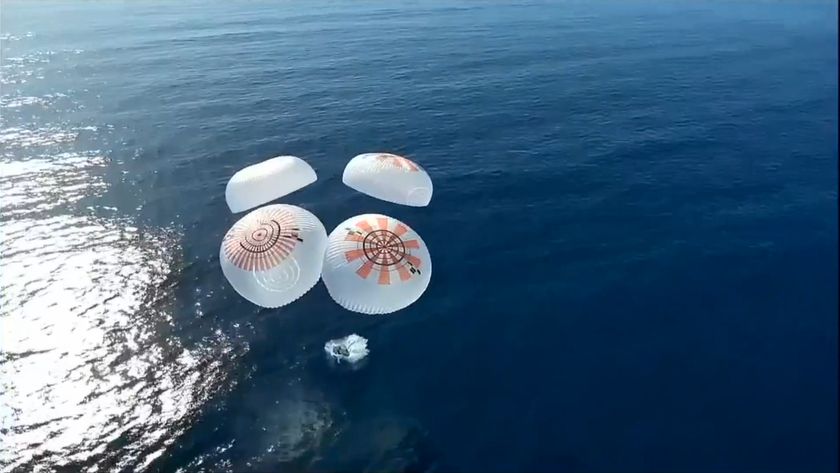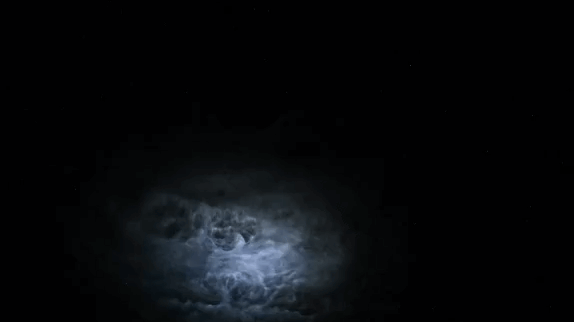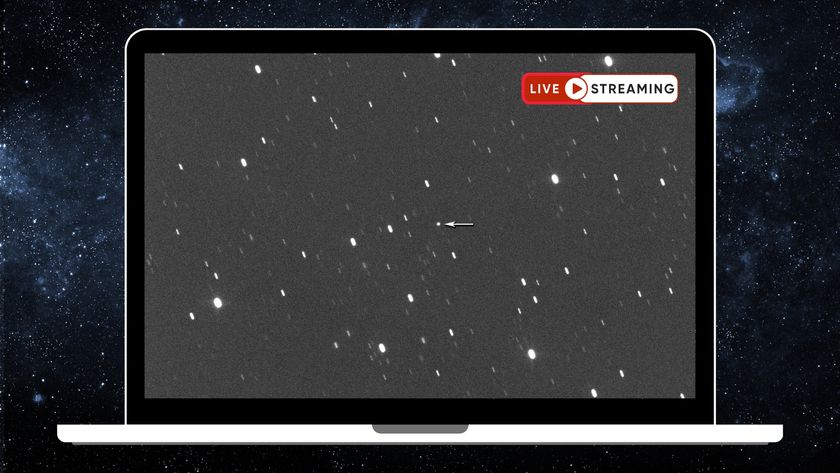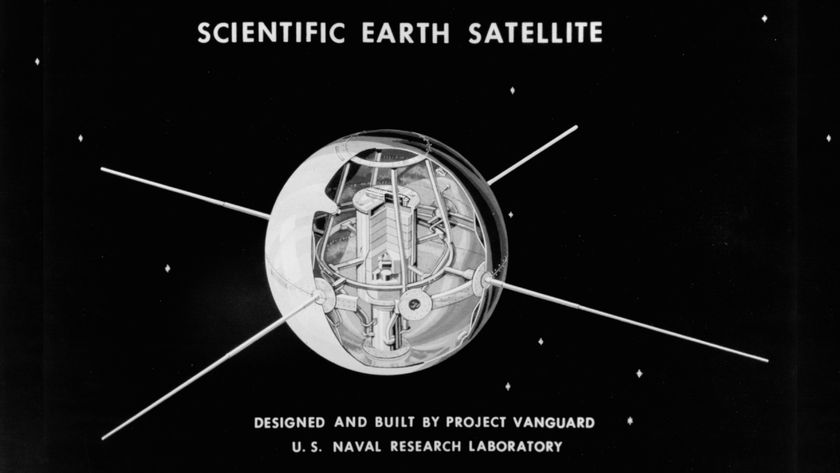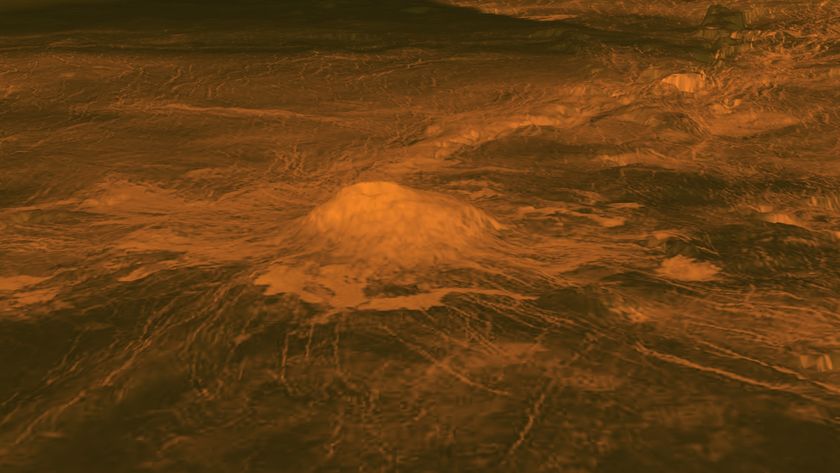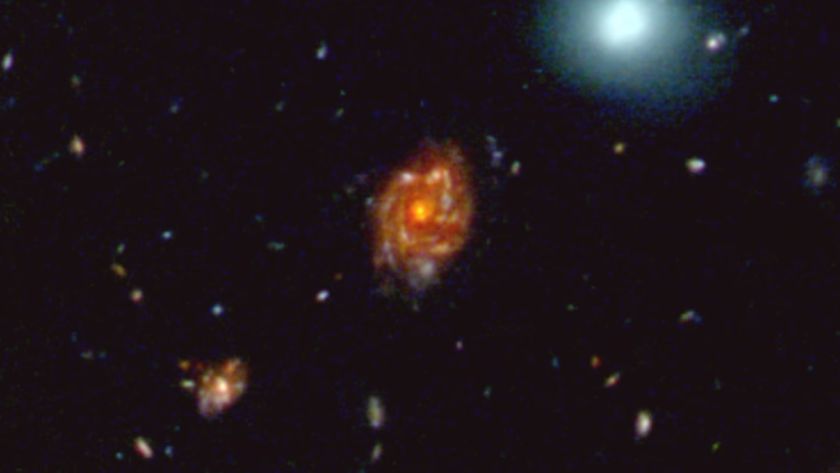Stars Have Earth-Like Weather
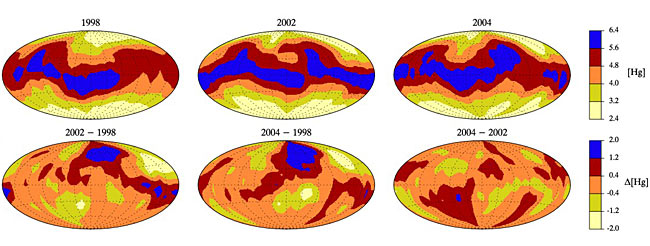
The skies of stars mightexperience weather like that on planets, researchers now find.
The drifting clouds scientistshave seen are wispy, "just like cirrus clouds on Earth"?except theseare made of mercury, explained astrophysicist Oleg Kochukhov at UppsalaUniversity in Sweden.
Investigating these metal cloudsmight shed light on how elements form inside stars.
Kochukhov and his colleagues spentseven years peering at alpha Andromedae, the brightest star in the Andromedaconstellation. The bluish-white star lies about 100 light-years from Earth andis more than twice as hot as the Sun and roughly three times its mass anddiameter.
Stars can develop spots on theirsurfaces, which are largely thought due to magnetic fields. These are howsunspots on the Sun are created, for instance. However, alpha Andromedae is notmagnetic, so the spots Kochukhov and his colleagues discovered on it five yearsago were an enigma.
Now the researchers find thesespots are clouds in that form and disperse in alpha Andromedae's skies,following dynamics similar to weather patterns on planets, findings detailedonline June 24 in the journal Nature Physics.
Such weather could be seen onstars that, like alpha Andromedae, are hot and massive. They also have to spinrelatively slowly?alpha Andromedae completely rotates about once every 60hours?as spinning too fast might destroy any clouds. Kochukhov noted ahalf-dozen or so other candidates have recently been seen already, includingthe star AR Aurigae, which might have clouds of strontium, yttrium and platinumas well.
Get the Space.com Newsletter
Breaking space news, the latest updates on rocket launches, skywatching events and more!
Mystery process
What makes these metal clouds formremains uncertain. Kochukhov suggested random disturbances in alphaAndromedae's atmosphere could generate clouds, "a process similar to whatis quite often seen in the atmosphere of our own planet," or perhaps thegravitational pull of alpha Andromedae's companion star helps perturb its sky.
The discovery of weather on starscould help solve a mystery concerning why startling discrepancies were seen inthe levels of mercury and other heavy elements in stars like alpha Andromedae.
"These are all the same typeof star, so you'd expect them all to have roughly the same abundances ofmercury, but they could vary by a factor of 100 from one star to thenext," explained George Preston, astronomer emeritus at the CarnegieObservatories, who did not participate in this study. "Now it turns outthis variation could be due to weather. You might see different amounts ofmercury at different times."
Alpha Andromedae and similar stars"are critical to understanding the origin of elements," Kochukhovsaid, as heavy elements are concentrated in them that are too faint to detectin sun-like stars. Stellar weather could shed light on how elements mix aroundin these stars, he added.
- TheWildest Weather in the Galaxy
Join our Space Forums to keep talking space on the latest missions, night sky and more! And if you have a news tip, correction or comment, let us know at: community@space.com.

Charles Q. Choi is a contributing writer for Space.com and Live Science. He covers all things human origins and astronomy as well as physics, animals and general science topics. Charles has a Master of Arts degree from the University of Missouri-Columbia, School of Journalism and a Bachelor of Arts degree from the University of South Florida. Charles has visited every continent on Earth, drinking rancid yak butter tea in Lhasa, snorkeling with sea lions in the Galapagos and even climbing an iceberg in Antarctica. Visit him at http://www.sciwriter.us



